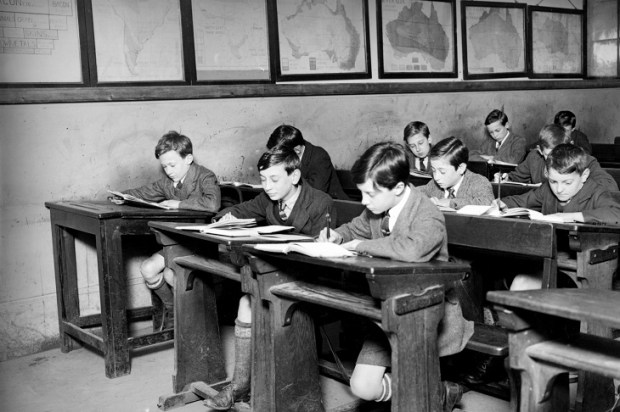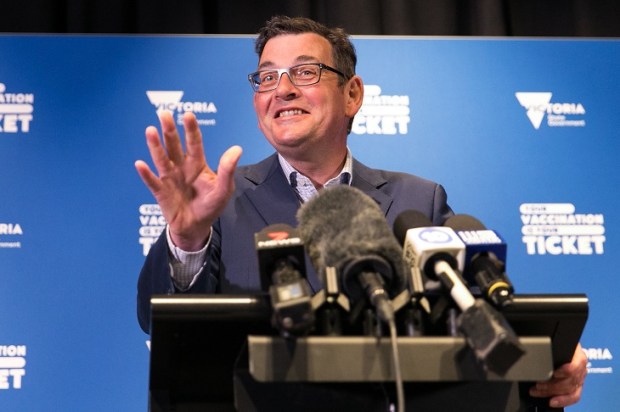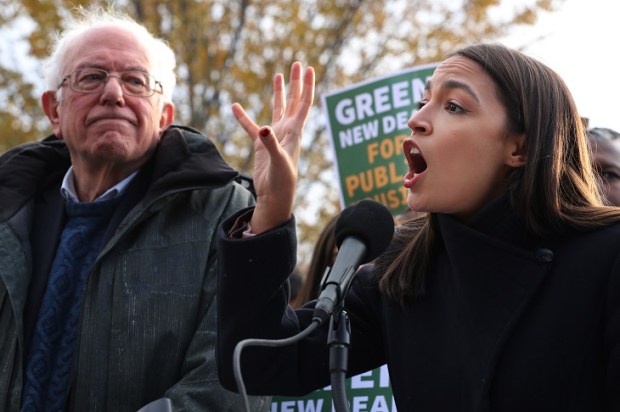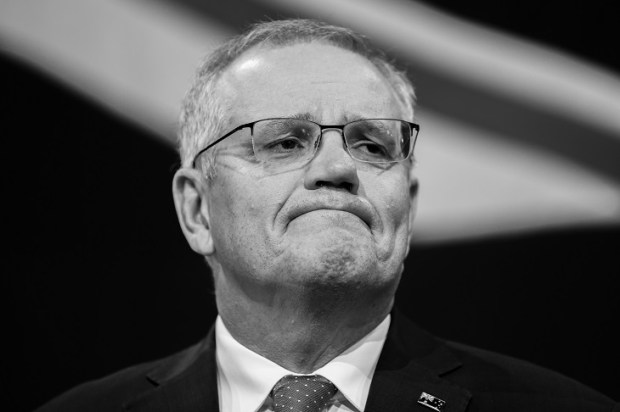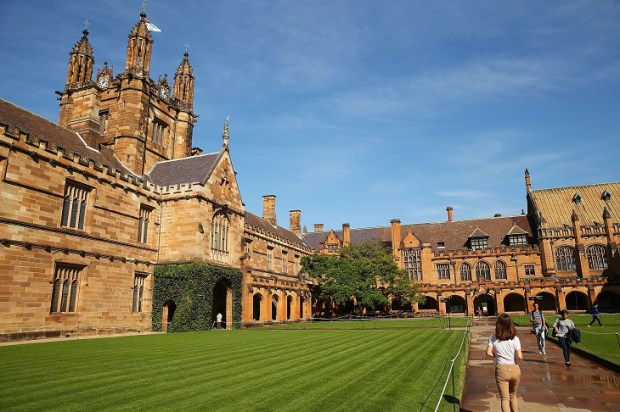Whatever the result of this Saturday’s Victorian election, one thing is for sure: there will be no conservative renaissance south of the Murray. There are too many structural forces arrayed against it.
One of the more enduring mysteries of Australian politics is the dominance of the Labor Party in Victoria. As in spite of their litany of failures – from the Red Shirts Scandal to the country’s largest debt to the hotel quarantine fiasco – the ALP have held power in the Garden State for all but four of the last 23 years.
A trend that looks set to continue come this Saturday. Even though the race is now tightening, with polls showing the Liberals neck-and-neck with Labor, discontent with the ALP and state Premier Daniel Andrews has not translated into an overwhelming endorsement of the right, but rather in a more tepid shift to the Liberals acting alongside support for the Greens and novel growth for the ‘Teal Independents’.
As akin to May’s federal election, malaise with one of the majors has not shifted in a Manichean fashion: with almost one in three Victorians now opting for a third party in what will be a record for the state and yet another sign of a deep discontent with Westminster government as it’s come to function.
Any easy Liberal optimism also erodes in light of the preferred Premier. With Liberal leader Matt Guy – the man who led the party to their stinging 2018 defeat – remaining unpopular and trailing Andrews 48 per cent to 34 per cent as preferred leader. Even Andrews himself appears to reject the possibility of a rightist resurgence; instead focusing his energies on his left as he tweets about LGBT rights and female sanitation.
Indeed, the floundering fortunes of the Liberals are evident in their own actions. With the party reduced to once-unimaginable gestures like preferencing the Greens over the ALP as it confronts an impending loss and yet another missed opportunity to govern in its own right. For the best the Liberals can hope for appears to be a hung Parliament: as the Coalition holds just 27 seats ‘winning government is likely beyond its reach’ according to Monash professor Paul Strangio.
The deeper question is, of course, why all this has happened? Why, despite egregious failings from the ALP and our broader left-liberalism, is Victoria now in essence a one-party, ALP-led, uber-liberal state?
Indeed, this is something that has perplexed onlookers for quite some time. As no matter the levels of ineptitude on offer, the ALP have proven unable to be dislodged from power. As even a factual description of the fall of Victoria – like the easily derided yet nevertheless valid fact of African gangs – has done little to shift the dial away from Daniel Andrews and the ALP.
What’s gone wrong for the Right, then? Like their federal and state counterparts, the Victorian Liberals have been utterly incapable of countenancing the vast demographic and cultural changes that have taken place: with Victoria now one of the most liberal and ‘culturally diverse societies in the world’.
And in such a place, the technocratic ‘tax-cut Reaganism’ that has come to define the right has proven utterly ineffective when pitted against the innate emotional appeal emanating from the other side.
Something that Daniel Andrews, for his many faults, has understood much better than his opponents. For when Andrews waxes lyrical about Victoria being ‘the most progressive state’ or when he – a married Catholic man with three children – spruiks his LGBTQ+ bona fides, it’s easy to dismiss such things as the cynical offerings that they are.
Yet such stances appeal to vast swathes of Victoria’s left-leaning electorate and provide a far greater rhetorical effect than the Liberals’ law-and-order remarks to a populace that’s been thoroughly indoctrinated in the dominant left-liberalism.
It’s not that the right are wrong – they’re not – it’s just that their views run completely counter to the liberal zeitgeist. Indeed, the state of the right evokes the fate of a monarchist in the France of 1789 or a teetotaller at Woodstock: virtuous, yet completely doomed by force majeure.
Something the Liberals appear to have understood as they’ve gone about moderating themselves is that tempering their rhetoric; purging their party of traditional conservatives, like Bernie Finn; and adopting strategies has made them more amenable to the Victorian electorate.
That is, they’ve finally realised that the demographic and cultural changes that have been unleashed have made traditional conservatism untenable. They’ve seen that if they can’t beat the Left, they’ll have to join them. A trend confirmed by Guy’s milquetoast performance in this week’s debate, his distancing from one of the party’s few real conservatives, candidate Timothy Dragan, and by Guy’s desire to be seen as anything but a red-blooded rightist: ‘My message to you is very clear: we are safe, we are sensible, we’re centrist and mainstream.’
A shift that is tragic for those of us who are conservatively inclined, and for our civic life more broadly; given human nature and that the ‘facts of life are [indeed] conservative’, as Margaret Thatcher famously remarked. Indeed, we can even point to dystopias like California as an example of what unrestrained leftism leads towards.
Yet the Right have lost as they’ve failed to reckon with the innately tribal and emotional appeal of the new multicultural politics. As any kind of technocratic fix proves fruitless when faced with the ‘Strong Gods’ of family, tribe, and culture. Indeed, the reason the Right have lost is because they’ve forgotten the insights of philosophers like Hume and his injunction that ‘reason is but a slave of the passions’ or Pascal and his refrain that ‘the heart has its reasons that reason does not know’. Practically, they’ve forgotten that in America, for example, African Americans vote around 80-20 per cent for the Left and have done so for decades.
And it is these innate animalistic experiences that have led to the dominance of the Left across the Western world. As even when rightist parties have been in power they’ve overwhelmingly followed a leftist agenda – like the Liberal Party’s 2017 institution of gay marriage, to take just one example.
A stance that has been long-predicted, but only recently been made more apparent. For as the American writers John Judis and Ruy Teixeira wrote back in 2004, the emergence of a new wave of demographically-diverse Americans was one which would ensure a ‘permanent Democratic majority’.
Well, that wave is now here and it’s doing as intended. As the writer Ronald Brownstein has noted, this demographically-diverse movement is that of the ‘coalition of the ascendant’, one imbued with what Wesley Yang has dubbed the ‘Successor Ideology’ and which is ‘not going anywhere’ either as the writer NS Lyons has observed.
And like much else, trends that originate in America tend to arrive in Australia a short time later. And so it is in this case, with an article by The Age’s Annika Smethurst further confirming the plight of Liberals. As Smethurst notes, Victoria’s ‘shifting demographics…remain the biggest threat to the Liberal Party’s long-term viability’. For as the more conservative Baby Boomers and their elders declined from 56 per cent to 38 per cent of the electorate over the last decade, the more diverse Millennials grew from 18 per cent to 38 per cent.
And unsurprisingly, the youngsters are far from enamoured with the Right. Indeed, as one Liberal insider bluntly put it: ‘they hate us’.
Which brings us back to this Saturday’s Victorian election. As although there is undoubtedly a deep ire directed at Daniel Andrews and the ALP, the underlying demographic and cultural trends show that the Right – the Liberal Party – is unlikely to be the key beneficiary.
Instead, the most likely outcome appears to be a returned ALP with a reduced majority or some form of Labor–Greens / Labor–Greens–Teal alliance. An utter disaster. Yet one which is, unfortunately, a direct result of Victoria’s culture and demography, and thus reflected in its democracy.


